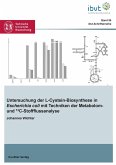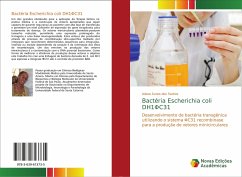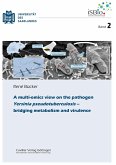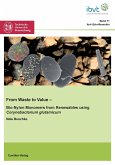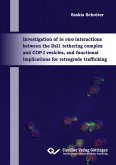Violacein and deoxyviolacein are promising therapeutics against pathogenic bacteria and viruses as well as tumor cells. In the present work, systems-wide metabolic engineering was applied to Escherichia coli for heterologous production of these high-value products. First, a high performance liquid chromatography method for accurate separation and quantification of violacein and deoxyviolacein was developed. Afterwards, a basic producer, E. coli dVio-1, that expressed the vioABCE cluster from Chromobacterium violaceum under control of the araBAD promoter and induction by L-arabinose, was constructed. Targeted intracellular metabolite analysis then identified bottlenecks in pathways that supply tryptophan, the major product building block of the natural products of interest. This was used for systems-wide engineering of serine, chorismate and tryptophan biosynthesis and the non-oxidative pentose-phosphate pathway, followed by elimination of L-arabinose catabolism. Transferred to a glycerol-based fed-batch process, E. coli dVio-8 surpassed the gram scale and produced 1.6 g L-1 deoxyviolacein (> 99.5% purity). The created chassis of a high-flux tryptophan pathway was complemented by genomic integration of the vioD gene of Janthinobacterium lividum, which enabled exclusive production of violacein (710 mg L-1 with 99.8% purity). This demonstrates the potential of E. coli as a platform for production of tryptophan based therapeutics.


